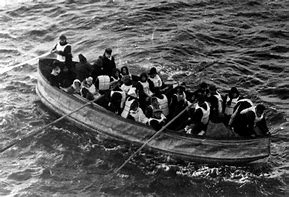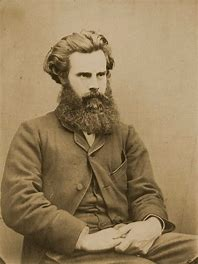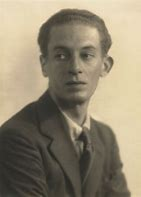RMS Titanic and Art
 |
| RMS Titanic |
This blog looks at the connection between Swansea art and the RMS Titanic.
So, let’s with Collapsible Lifeboat D. 2.05 am, April 15, was the last of the nine boats to have been lowered from the port side, of the stricken RMS Titanic, Second Officer Lightoller, managed to fit the lifeboat in the now empty davits of Lifeboat 1. Lightoller, was having difficult filling the boat with women and children but managing to fill the boat with 15-20 people. As the boat was being lowered, Mr Bjornstrom-Steffansson and Mr Woolner jumped from the lower decks into the boat. Picked up from the sea, was Mr Hoyt, who placed his wife in the lifeboat earlier. Also rescued aboard this lifeboat were the two brothers, Michel Marcel and Edmond Navratil, who were dubbed the “Orphans of the Titantic”
Earlier on
the evening of 14th April 1912, at the time of the collision, Woolner,
was in the Smoking Room, in the company of Swedish businessman Mr Bjornstrom-Steffansson
and Edward Kent. Kent was a victim of the sinking.
Woolner, who
boarded the Titanic at Southampton. During
the voyage he became acquainted with the noted American author, Helene Churchill
Candee, Archibald Gracie, Edward Colley and the aforementioned Mauritz
Bjornstrom-Steffansson, they were known as the “our coterie”.Mauritz Bjornstrom-Steffansson
Woolner reported that there was no sensation,
but the ship stalled slightly and that the Smoking Room seemed to have twisted
somewhat. Following Woolner, went and
found Mrs Candee and suggested that they went for a walk, and that he didn’t think
that there was anything serious to worry about.
Having walked to the end of the Promenade Deck, he noticed that people were
walking around with lifebelts on.
Woolner, enquired with nearby steward if and order with given to wear lifebelt,
which was the case. Assisting Mrs Candee
back to her cabin and helping her into her lifebelt. Woolner went back to his cabin and picked up
two lifebelts and gave one away to a passerby.
Escorting Mrs
Candee to the Boat Deck, following orders given back Captain Smith, passengers
were ordered to A-Deck. Further orders
were given by Captain Smith, for those passengers to return to the Boat Deck, Wooler
saw Mrs Candee off on Lifeboat 6.Helene Churchill Candee
Both Wooler
and Bjornstrom-Steffansson assisted in filling other boats. Woolner witnessed Mr and Mrs Strauss in
Lifeboat 8 and Mrs Strauss refusing to leave her husband.
Collapsible D
Woolner and
Bjornstrom-Steffansson, watched as Collapsible D, was being prepared, and heard
scuffle and shots being fired from the starboard side. Woolner said to his friend that “there is
nothing more for us to do here” and they made down to A-Deck. It was here that
both men jumped, Bjornstrom-Steffansson jumped first, and tumbled in bow of the
boat. Woolner, mis judged the jump and
was hampered by his lifebelt, bounced off gunwale and fell backwards and
clinging by his fingers to the gunwale and his legs dangling in the water. Bjornstrom-Steffansson
assisted him into the boat. Collapsible
D was picked up by the RMS Carpathia at 7.15 that morning.
RMS Carpathia
Woolner returned
to the UK, on board Lusitania.
So, who was
Woolner?
Mr Hugh
Woolner was born 1899, Marylebone. Son of
Thomas Woolner and Alice Gertrude Waugh.
At the time of the 1817 Census, the family were living at Welbeck Street. The family were still here a decade later, Hugh
and his brother, Geoffrey, were listed as Students at Marlborough College. Geoffrey died the following year aged 14, at
Marlborough. Hugh graduated from
Cambridge University.
Following
his father’s death, 1892, Hugh started his career with the London Stock Exchange.
Later founding the brokerage firm Woolner & Co. His mother, Alice,
died March 1912. Hugh married 1892, to Mary
Simpson. The couple were to be parents
of five children. Hugh died February
1925.
So, let’s
turn our attentions nearly a century earlier to Hugh’s father, Thomas Woolner.
Thomas was
born in 1825, Hadleigh, Suffolk. Thomas was a sculptor and poet and was one of
the founding members of the Pre-Raphaelite Brothers, having been established during
1848. Thomas Woolner
Having been
trained by William Behnes started to exhibit works at the Royal Academy from
1843. During a visit to Australia, Thomas,
obtained commissions for statues of British Imperial Heroes, including Captain
Cook.
The Swansea
born portrait painter and art collector, John Deffett Francis, of Thomas. 1899, John arranged for Thomas to donate his
plaster cast bust of William Gladstone to Swansea Libraries. Thomas also donated the bust of Alfred, Lord
Tennyson.John Deffett Francis
Swansea
Public Library situated along Alexandra Road, was opened by William Gladstone
during 1887. It was here in the Reading
Room, that both busts were placed, and they stayed here until 2008, following
the library closure.Alfred, Lord Tennyson bust
Thomas Woolner
married Alice Gertrude Waugh, during 1864, and they were to have six children. Thomas died during 1892.
Alfred,
Lord Tennyson, did visit Wales, but sadly didn’t visit Swansea, unlike Gladstone. However, he was inspired by the Welsh landscape
and literature, which were featured in a few of his poems.
Swansea Public Library, Alexandra Road
Cedric Morris,
Swansea born. Artist and Plantsman.Cedric Morris
Born December
1889, Sketty. Son of George Lockwood Morris and Wilhelmina Cory. On his father’s side, Cedric was descended from
Sir John Morris, 1st Baronet and his sister Margaret, the founder of
Dulwich Picture Gallery.
Frairs Road Cemetery, Hadleigh. Buried here is Sir Cedric Morris.














Comments
Post a Comment